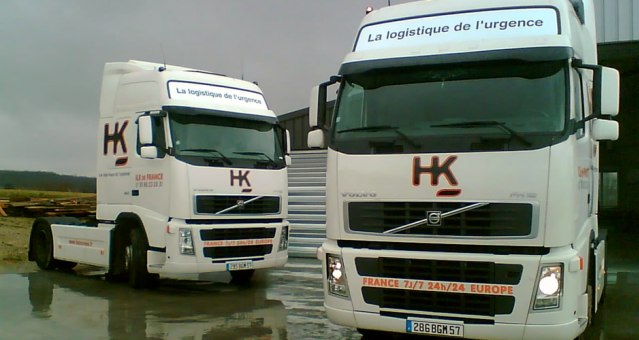What are the critical issues in the urgent race?
In a world where the notion of the urgent race is increasingly present in business needs, urgent delivery plays an essential role in the global supply chain, supplying major industries as well as satisfying consumer needs. Behind the frantic race to deliver in the shortest possible time lie critical issues that require careful thought and innovative solutions.
Time pressure and operational efficiency
One of the main difficulties of the urgent race is, as its name suggests, the customer's expectation of deadlines. Deadlines for certain types of "critical" goods are tight, and every minute of delay can have major consequences, whether it's a delivery of vital medical supplies, spare parts for a factory or other major equipment that has broken down, or parcels for special events. To meet this pressure, express companies need to optimize their operational efficiency, using state-of-the-art technologies to track shipments in real time, optimize routes, minimize downtime and, above all, provide back-up solutions in the event ofunforeseen events during transport.
This notion of reliable information is also essential for customer relations. Indeed, for some customers, it is important to be able to provide location and current delivery status data, so that the end customer can be reassured and anticipate receipt of the goods. Other customers don't want to be kept up to date on the location of their goods, because once they've committed to a pick-up and delivery schedule, they only ask to be notified if there are any deviations from the schedule.
Environmental impact
In the many cases where dedicated express delivery is necessary, it has a significant environmental impact. Tight deadlines often lead to the use of faster but less environmentally-friendly express modes of transport. The vehicles used for express deliveries are just as fuel-efficient as standard express transport vehicles, because serious companies are constantly investing in greener fleets, and working on different ways to reduce their ecological impact: hybrid vehicles, all-electric, when the operational solution (payload, volume and range) exists on the market.
The notion of an urgent journey also eliminates the possibility of co-loading goods, which allows several shipments to be loaded onto the same vehicle, thus reducing environmental impact. The customer is paying for an emergency service, and the urgent transport provider cannot take the risk of extending the fastest possible delivery time due to a detour for co-loading, or a delay in loading or unloading the co-loaded goods, so that the goods arrive as quickly as possible. This aspect runs counter to the idea of being able to use the same truck for several customers who will have different goods and loading/unloading locations.
Likewise, as the vast majority of racing-type transports are carried out in light vehicles, it is very rare for the vehicle used to be able to recharge and return to its base. Due to operational and social constraints, returning to the vehicle's base empty is often the rule.
Carriers specializing in urgent deliveries are also faced with a growing demand from shippers to reduce the CO² emissions produced by the express services they use. As mentioned above, the choice of rolling stock and the use of electric trucks are two ways of meeting this challenge. However, they cannot be used 100% for urgent deliveries. Particularly when the distances involved exceed the range of electric trucks.
Safety and regulatory compliance
When it comes to urgent deliveries, safety is paramount. Packages can contain dangerous or sensitive products, and delays or errors can have serious consequences. What's more, companies must comply with a multitude of national and international regulations concerning the express transport of dangerous goods, worker safety and data security. Ensuring regulatory compliance and maintaining high safety standards requires careful planning, adequate staff training and investment in robust safety systems. This is particularly true for the transport of medical goods, where drivers are trained in best practices for the transport and distribution of pharmaceutical products, and are responsible for ensuring that procedures are followed, including traceability.
Costs and profitability
Urgent deliveries can represent a significant cost for companies, compared to more traditional deliveries with non-dedicated express transport services , including load breaks and goods consolidation, with higher rates corresponding to these specific operating modes, in order to achieve the shortest possible delivery times. This means that order-giving companies must strike a balance between customer satisfaction, profitability and cost control.
This may involve using strategies such as consolidating shipments to optimize use of loading space, negotiating preferential rates with carriers, and investing in supply chain management technologies to improve efficiency and reduce operational costs. In many cases, the most effective way to reduce these costs by working outside dedicated express, is to explain to the customer or supplier involved the major impact on transport costs, and they will readily accept waiting an extra 24 or 36 hours for delivery.
As industrial costs are high, express transport can be an adjustment variable. Price control by express carriers is very important. Beyond the competitive aspect between the different players, rates must not become a deterrent, leading to a drop in overall demand. That's why it's rare to see an "emergency" carrier take advantage of a customer's critical demand to make an unreasonable margin. This would reduce the likelihood of doing the transport, but the shipper might remember and work with a colleague of his for the next transport.
Rush transport is a vital part of the global economy, enabling us to respond rapidly to the needs of businesses and consumers. However, it also presents critical challenges that require special attention. By addressing these challenges with creativity, innovation and a commitment to sustainability, transportation companies can continue to play their vital role while minimizing their negative impact on the environment, ensuring safe operations and offering added value to their customers.




